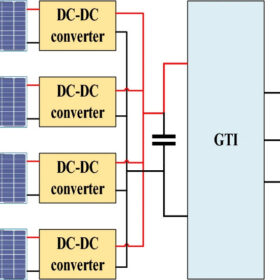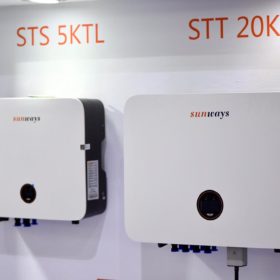Weekend Read: Gray skies over Californian solar
There may be a global solar boom but a drastic revision of California’s net metering program has ruptured the industry overnight and is affecting everyone from installers to financiers to makers of power electronics.
New MPPT approach for multi-string PV systems under partial shading
Egyptian researchers have developed a multi-string PV system with a converter control strategy, achieving 99.81% efficiency with a direct duty cycle for maximum power point tracking (MPPT).
Is it time to repower?
America’s booming solar industry has hit a major speed bump due to supply-chain disruption and the inflationary pressures driven by Covid, war in Ukraine, and trade restrictions with China. As a result, utility scale solar deployment dipped 40%, year-on-year, in 2022.
Sunport claims to have reconciled back-contact and bifacial conundrum
The metal wrap-through-focused module maker revealed its M series at the SNEC solar conference in Shanghai, claiming a bifacial rate of up to 70%.
Huawei and Yingli announce smart collaboration
The two brands announced a strategic project at the SNEC solar conference and trade show which will see the establishment of trading and big data centers to help roll-out PV in China.
Hybrid salp swarm algorithm for MPPT optimization
Indian researchers have created a hybrid salp swarm algorithm to optimize MPPT tracking in PV systems under partial shading conditions. It is based on the swarming behavior of salps in the ocean.
Simplified modeling for partially shaded PV systems
A proposed two-diode model is based exclusively on the standard test condition parameters of solar modules and their irradiance levels. The analytical tool reportedly enables PV system operators to estimate the I-V curves of a shaded array quickly and accurately.
New MPPT algorithm for bidirectional inverter design
A newly proposed inverter design relies on a solar charge controller featuring maximum power point tracking. It is based on an artificial fish-swarm algorithm, which offers high convergence speeds, flexibility, fault tolerance, and accuracy.
Fuzzy logic MPPT to improve PV system performance
A Pakistani-Chinese research group has demonstrated a new maximum power point tracking method, based on a fuzzy logic algorithm to provide faster results. The converter tech is claimed to have an impact on PV system efficiency and provide isolation between the load and the PV array.
Temperature-based MPPT algorithm to improve PV system efficiency
Researchers in Spain have developed a maximum power point tracking (MPPT) algorithm based on just one input parameter – PV module temperature. The algorithm has already shown stability in testing, the scientists claim.










